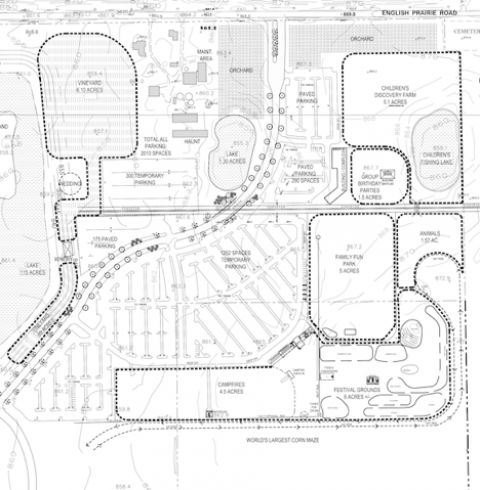
Vol. I, No. 3, May 2023
Master planning agritourism
Much of our work with agritourism farms is designing master plans for new developments or accommodating current and future growth at existing agritourism farms. Master plans typically include site plans and floor plans for buildings.
When many farms developed their original layouts and facilities, they didn't anticipate the growth they would experience. This has become especially true since the pandemic. We have agritourism clients who have seen their business double since 2019. As a result, many have found the need to expand, but parts of their existing layouts will not allow that in their current configuration or location. The solution often requires rearrangement or relocation of some parts. Here are just a few examples of the types of issues we've solved developing new master plans for our agritourism clients:
- The traffic flow needs to be changed. For example, some farms with farm markets originally designed admissions for festivals and u-pick to enter and exit through the market. With increased attendance, the market space no longer accommodates the volume of people nor leaves adequate room for shopping.
- Parking has become inadequate and is limiting attendance. For festivals, this can quickly become a problem from an increasing length-of-stay, which results in parking spaces not turning over as frequently.
- Inadequate food and drink facilities to handle the peak crowds. People will only stand in line for so long. With food offerings becoming more critical in attracting customers, this has grown increasingly important.
- There is no room for the festival grounds to expand.
- Zoning festival areas for non-peak and peak times
- Designing animal petting areas so they will be safe, especially from E. coli 0157 illness.
- Ensuring the best layout and flow through farm markets and retail areas.
- Conflicts between public events, private events, and farm markets for parking and access.
- Designing hayride routes that don't go through areas with people.
- Handling admissions, access, and payment for both festival grounds and U-pick fields.
- Not achieving the potential per capita revenues for food and beverage.

The design of any agritourism facility is a giant puzzle with many pieces that must be adequately sized for current capacities and future growth and have the right adjacencies to each other. The property's configuration and size, potential points of customer vehicle access, location of existing buildings, including back-of-the-house maintenance facilities, topography and drainage, zoning issues, and many other considerations must be considered to develop a workable master plan.
If you're facing any challenges with your existing layout or planning a new agritourism facility, don't hesitate to contact us to discuss how we can assist you with its design and different aspects of its operation.
Subscribe to Agritourism Today



